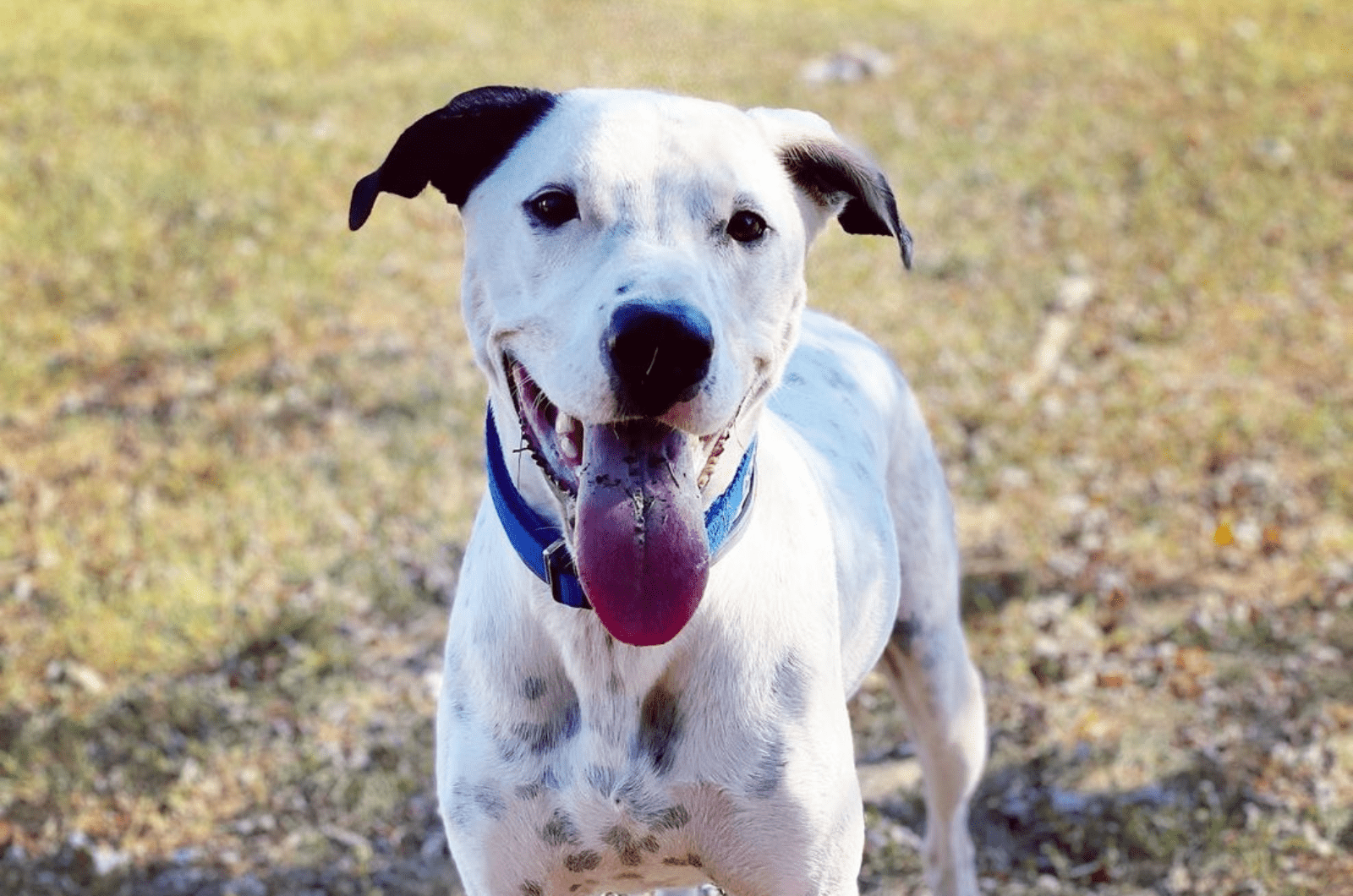A Great Dane Dalmatian mix is considered a large dog with a great heart filled with love for their humans, which is why they’re often described as amazing family canines.
These pups can also be great companions for outdoor adventures, but don’t underestimate their protective nature as they can be excellent guard dogs, too.
It is an offspring of the “Apollo of dogs”, one of the largest and most muscular dog breeds, and Dalmatians, which have been known as carrier canines for a long time throughout history.
This type of mixed breed dog offers great qualities, which are described in the paragraphs below.
What Is A Great Dane Dalmatian Mix?
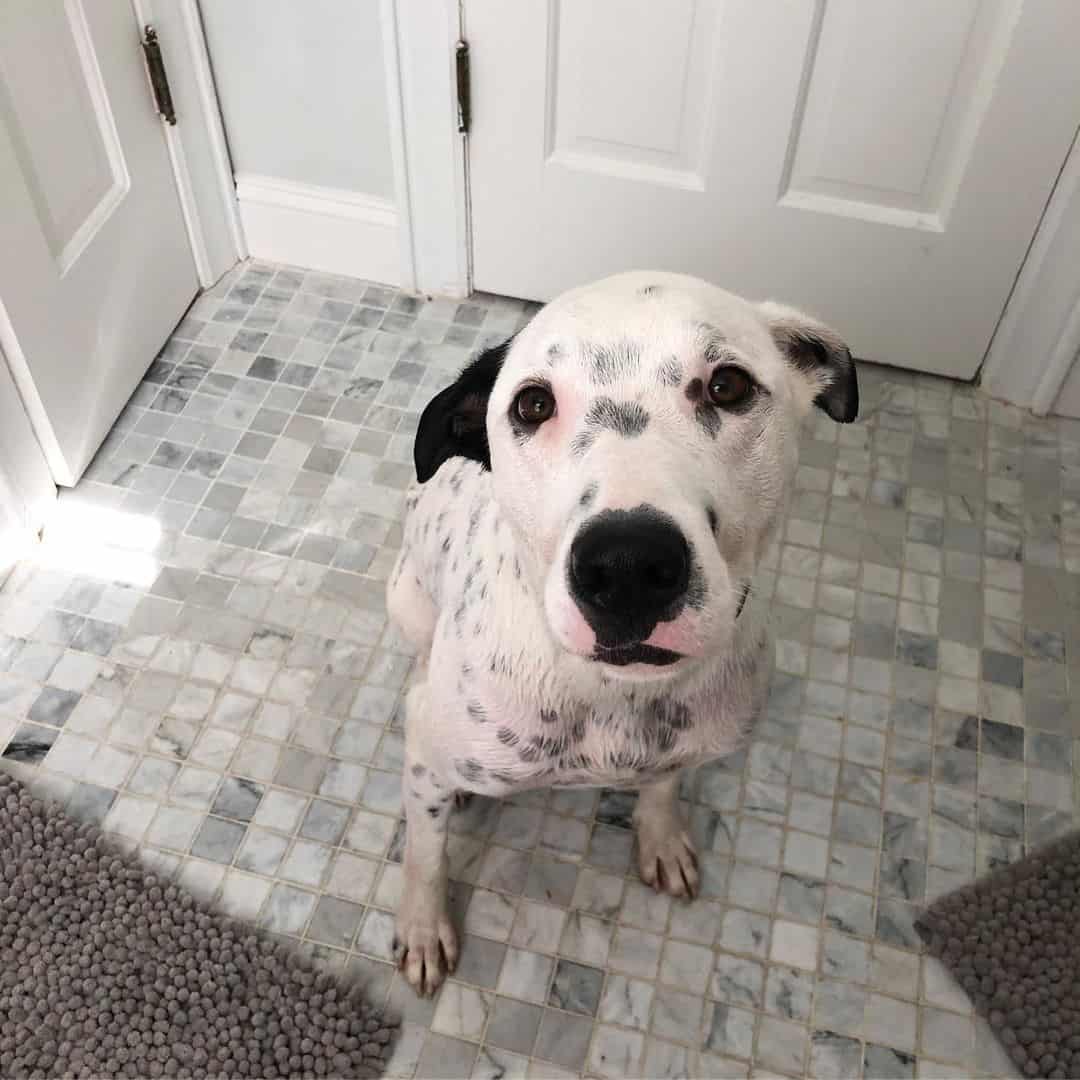
Photo from: @king_the_greatdal
The easiest way to explain this crossbreed is by saying that it is the result of breeding between a medium-sized Dalmatian and a large Great Dane dog.
This hybrid breed is robust, comes in a variety of coat shades and patterns, and is excellent as a canine companion for playtime with family members, camping trips, and other activities.
In a similar manner, it adopts the overall personality types of both parent breeds.
As a consequence of this, mixed breeds tend to have a disposition that is extremely kind, upbeat, and gentle, particularly when it comes to expressing their devotion to members of their family.
However, you should keep in mind that this type of crossbred isn’t acknowledged by the American Kennel Club (AKC), as they still implement the “no-mixed breed” policy.
Great Dane Dalmatian Mix: Parent History
Dalmatian
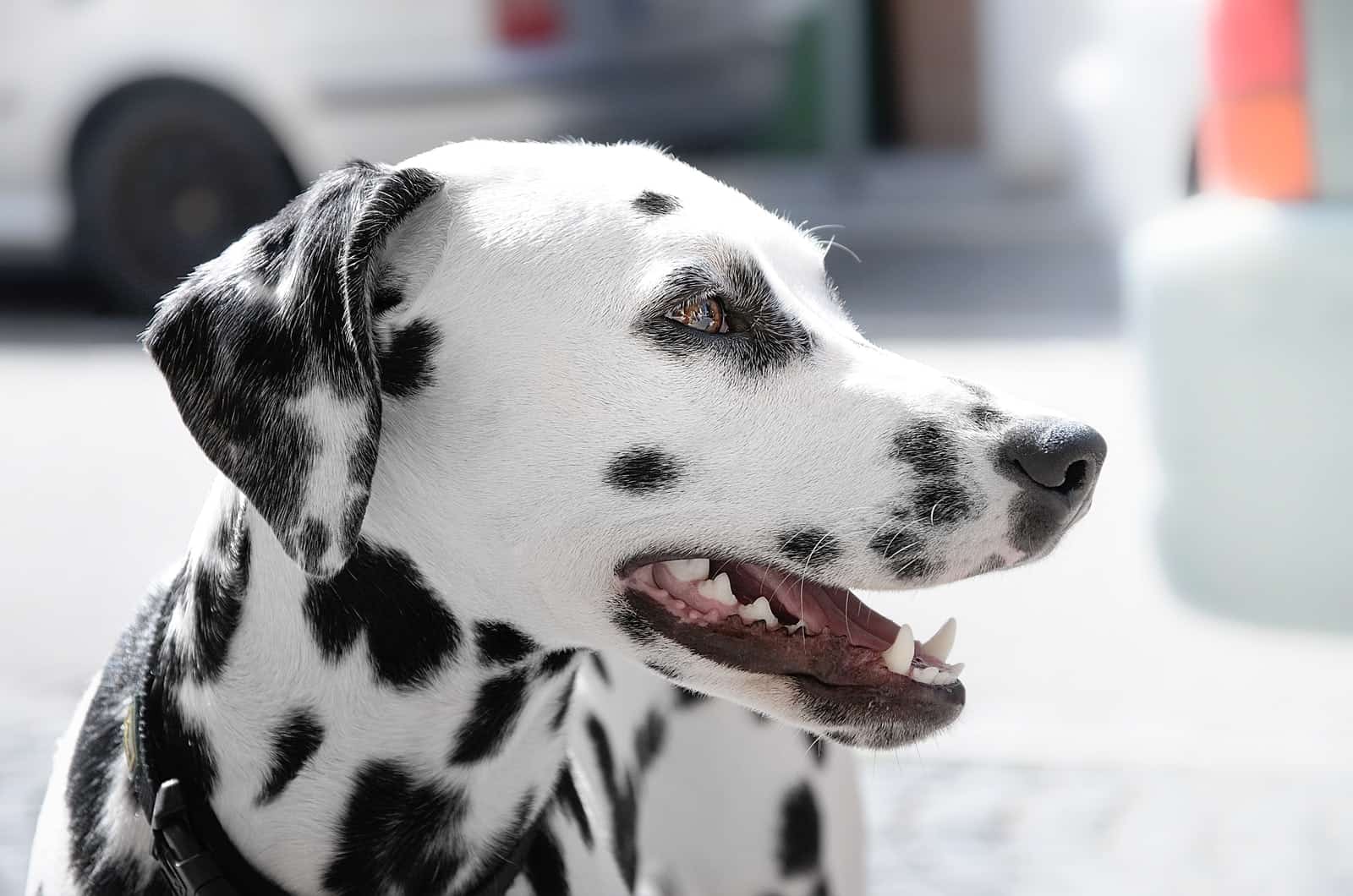
Dalmatian dogs come from a region of Dalmatia, which is located in a small European country named Croatia.
This type of pup was first bred as a hunting dog, but later became popular as a carrier canine.
The Dalmatian is a canine breed that has exceptional strength and endurance, which isn’t a big surprise considering that they have sturdy muscles, well-defined markings, and agility because of their medium-sized stature.
Appearance
Dalmatians can grow up to 23 inches, according to the breed standard set by the AKC, although 24 inches are allowed (but not preferred).
When seen from the sides, the pet’s profile should have the appearance of a square: the torso should be as long from the front chest to the hindquarters as it is high at the withers.
The head is usually held pretty high, and the ears, which are rather slender and taper towards the tips, should be placed quite near to the head.
There is a variety of acceptable eye hues, including brown, amber, and blue; some pups of the Dalmatian breed can have heterochromia (a combination of brown and blue eyes).
Great Danes
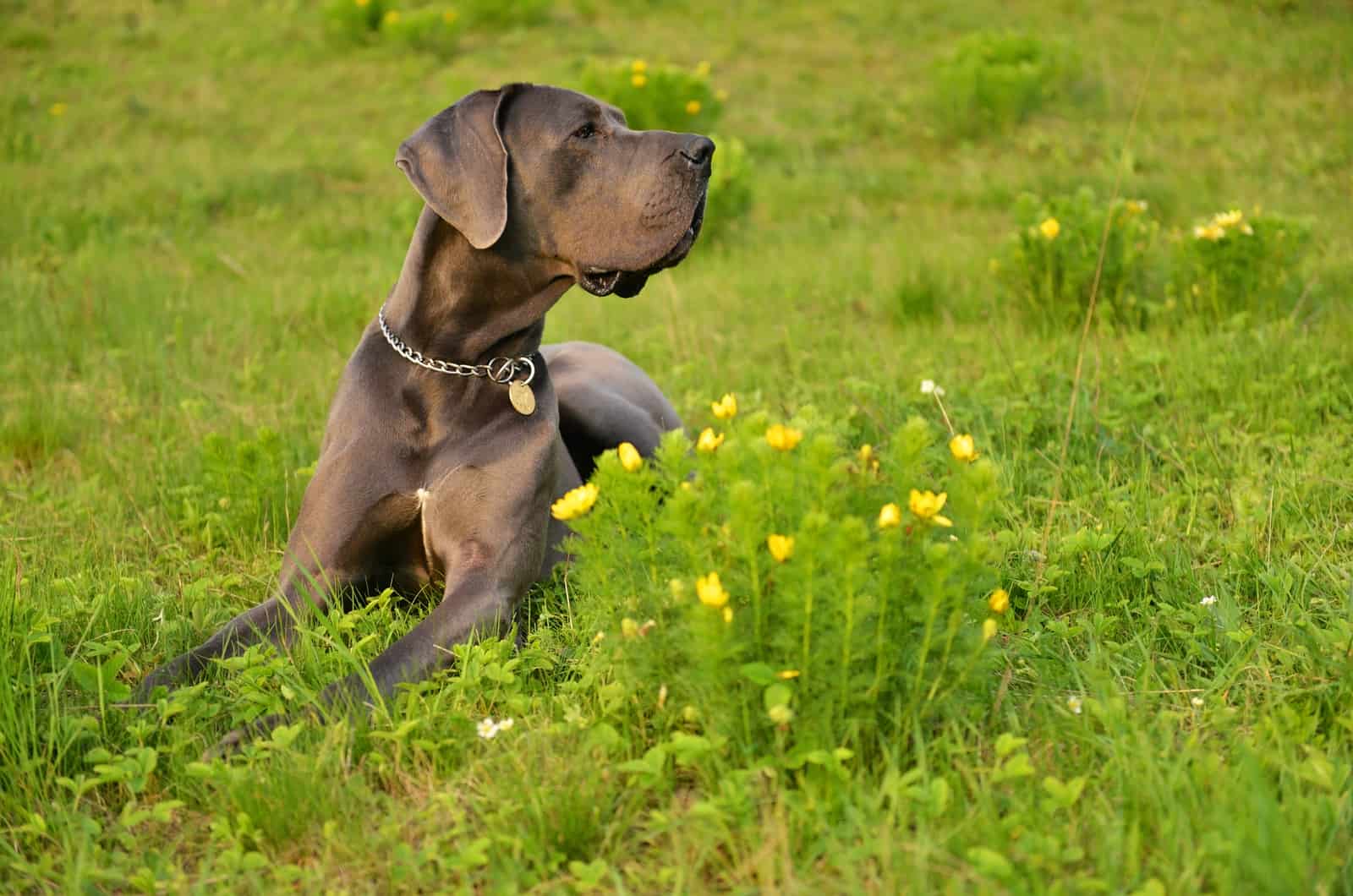
The homeland of these large dogs is Germany, although they have become very popular in the United States in the last few decades.
The Great Dane is bred from Mastiff-like pups that were traditionally utilized to guard estates; they are considered the ancestors of this dog breed.
RELATED: 44 Amazing Mastiff Mixes: A Big Collection Of Giant Dogs
The Great Dane is a massive, imposing, and gracious breed of dog.
Appearance
Even though they’re categorized as the same canine breed, there are some distinctions between male and female Great Danes.
Males may reach a height of 32 in and weigh up to 120 lbs, while females can reach a height of 30 in and weigh up to 100 lbs.
This dog breed is characterized by a larger head and a short muzzle. The eyebrows stand out quite a bit.
The ears usually hang forwards, although they might be clipped to stay upright.
The body of the Great Dane is long and powerful, and the front legs are set in a straight position. The size of the tail is roughly equivalent to the standard; it is wide at the base, but it thins out as it gets closer to the tip.
The coat is short and smooth, and it comes in a number of hues characteristic of Great Danes, such as brindle or fawn, blue, black, or harlequin, and it might contain certain markings as well.
The Appearance Of The Great Dane Dalmatian Mix
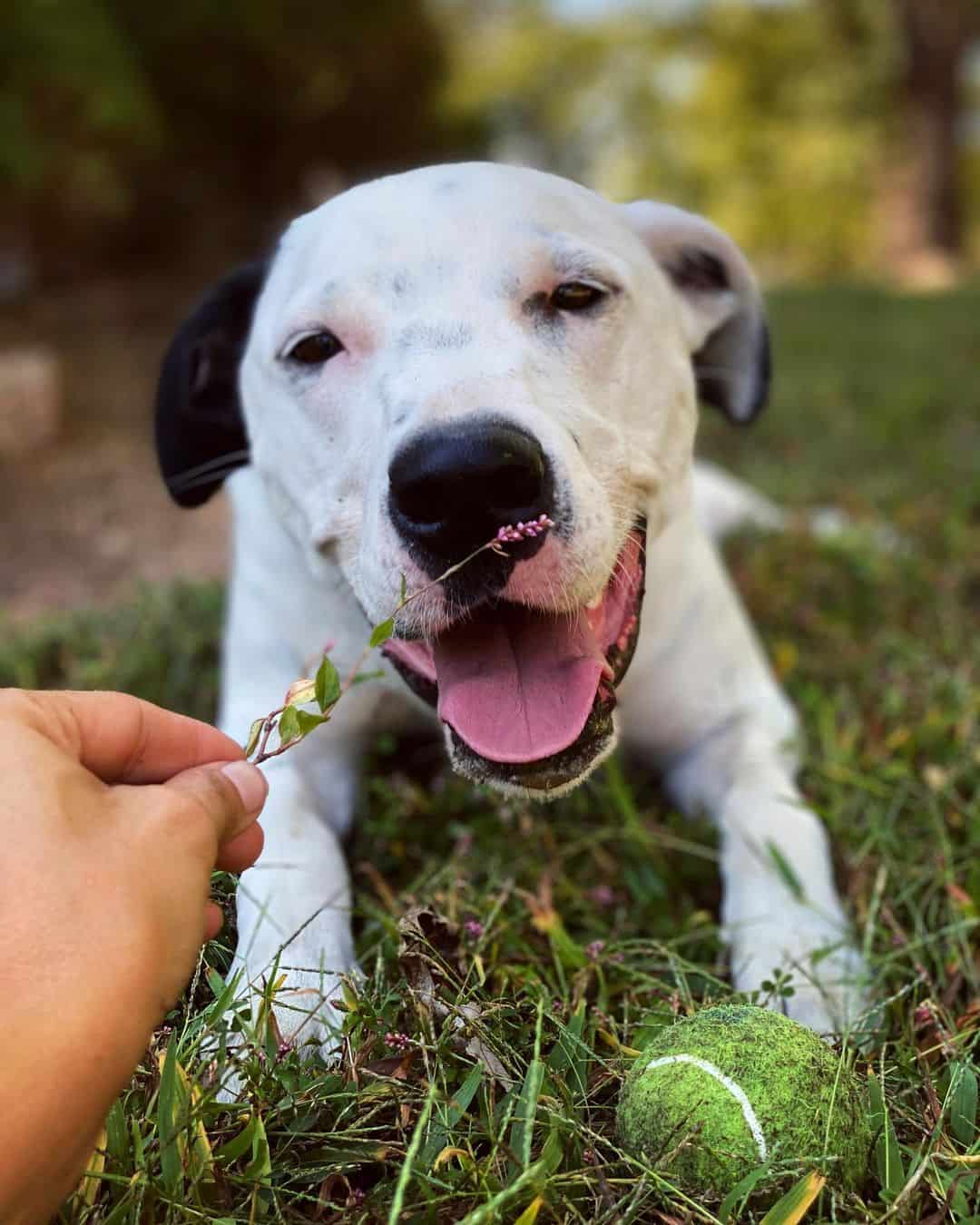
Photo from: @king_the_greatdal
The looks of this crossbreed are heavily influenced by the dominant genes of both ancestors. These crossbred puppies can have a mixed appearance of both dog breeds, although it can also resemble one of the parents more, depending on the genetic structure of the crossbreed.
However, there are certain general guidelines that can be used to describe Great Dane and Dalmatian crossbreed pups.
It can be said that these pups generally have shorter fur with a single base shade that can contain a variety of markings and speckles in a variety of hues.
Some puppies might inherit the coat colors of Dalmatians, which include the black or liver spots on a white background or Great Dane shades and coat patterns.
When it comes to the type of their coats, these crossbreeds will mostly have short coats, just like their parent breeds.
Size
Although there is a high chance this canine will inherit the physical characteristics of Great Danes, crossbreeds will rarely reach the height of this large dog breed.
The Great Dane Dalmatian mix weight can range from 50 to 150 lbs. Many will agree that there is a great discrepancy between these two numbers, but this limit is based solely on the weight of its purebred parents.
Therefore, the weight of the pups is determined by the genetic structure they are born with.
The situation is quite similar with the height too, as Great Dalmatians might grow anywhere from 19 to 32 in.
The size of an individual is mostly determined by their genes. If Great Dane genes prevail, this type of mixed-breed pup will develop into a big and muscular canine.
The Temperament of The Great Dane Dalmatian Mix
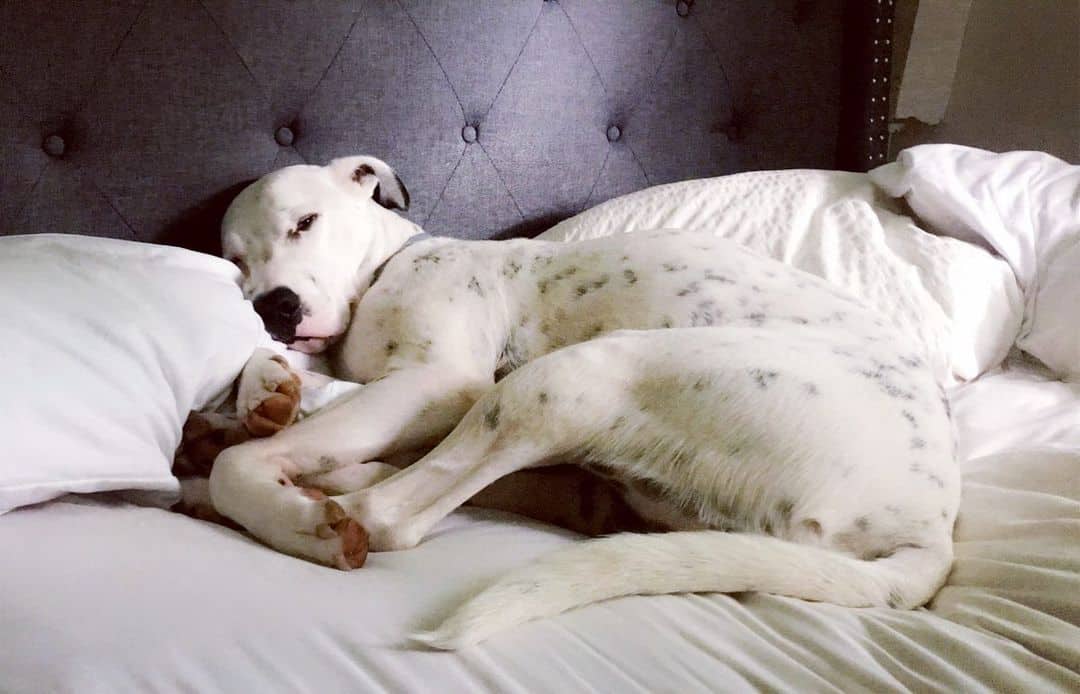
Photo from: @king_the_greatdal
It’s difficult to say what kind of temperament this designer canine will have when they become mature, but according to their ancestors, these mixed-breed dogs are supposed to have a solid temperament.
Both parent breeds have high energy levels, so there is a high chance that your Great Dane Dalmatian mix puppy will be fiercely energetic as well.
Great Dalmatians are considered great watchdogs that are quite protective of their owners and families, although they love to play.
However, keep in mind that they’re highly energetic pups, so they’ll require a lot of physical activity, especially outdoor training and playtime.
This hybrid is, at its core, a kind and patient large pup, much like both of their parent breeds.
It is quite friendly and can typically get along with people as well as other animals, particularly after receiving the appropriate training in socializing.
Early socialization is the key to a great temperament, so it’s crucial to start with training from early puppyhood.
Ignorance can be induced in this type of pup if they’re neglected or left alone for a long period of time.
Are Great Dane Dalmation Mixed Dogs Aggressive?
Purebred Dalmatians are considered perfect family pets because of their kind demeanor. They are just as good with children as Golden Retrievers, Labradors, Rotties, and other dog breeds.
However, they can become quite excited during playtime, so it’s not recommended to leave them with babies or toddlers without supervision.
Great Danes rarely show any signs of aggression either, although they might physically appear as hostile canines. They’re often described as gentle giants, but don’t let that fool you.
Great Danes might be kind, but they’re also excellent guard dogs that will protect their property, just like Dobermans, German Shepherds, Boxers, Pitbulls, Irish Wolfhounds, and other breeds.
Therefore, you don’t have to worry too much about your designer dog’s behavior if you give them enough attention.
They might look tough, but these pups are strongly attached to their dog owners, so don’t be surprised if they follow you even to the bathroom from time to time.
That is why Great Dalmatians might be prone to separation anxiety and show signs of destructive behavior if they’re left alone for a long time.
How To Train Your Great Dane Dalmatian Mix
Training and socialization of your puppy should start as soon as possible to maximize its potential during its early life.
These mixed-breed pups are intelligent dogs and won’t be difficult to train, but they will require quite a lot of physical and mental stimulation because of their energetic personality.
Make sure to implement positive reinforcement into your training sessions, which will bring great results.
Reputable breeders will often begin the training process from the first days of puppies’ lives, so it will be easier for you to continue training your pet as it will already be used to the practice routines.
However, you should separate training from long walks, which should be incorporated into your pup’s daily routine as well. Even if you do physical exercise (in the backyard or dog park), you will still need to take a daily walk for at least an hour or two with your canine.
Common Health Issues Of The Great Dane Dalmatian Mix
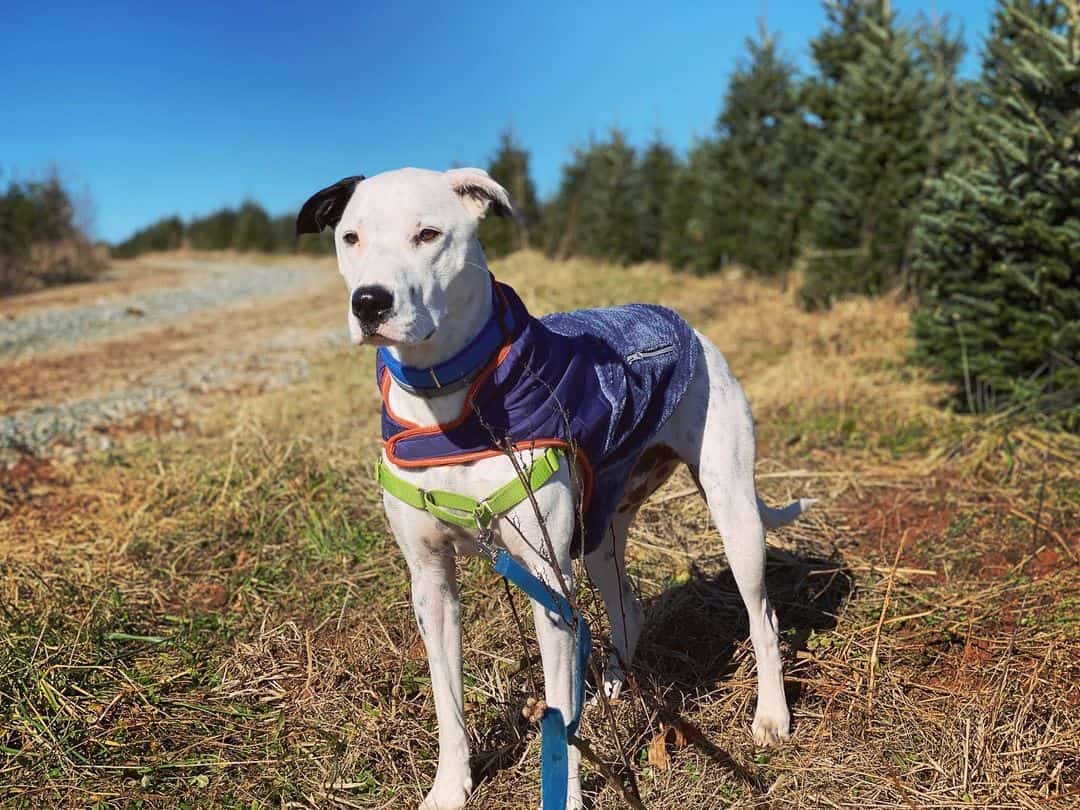
Photo from: @king_the_greatdal
These mixed-breed pooches are categorized as working dogs, just like their Great Dane ancestors, which is basically why they’re considered relatively healthy and sturdy pups.
However, they are still prone to some common health problems that they usually inherit from their parent breeds, such as:
• Hip Dysplasia – This is one of the most frequent health issues among big dogs like Great Danes, Cane Corsos, Irish Wolfhounds, and other large breed pups. This condition is usually hereditary, but it might appear in later stages of the doggy’s life, so it might not be diagnosed from early puppyhood.
Hip Dysplasia is characterized by the unequal growth of the joint ball and socket. If they don’t grow at the same rates, the joint will become loose, which results in severe lameness.
• Obesity – This is another common condition that affects all types of dog breeds in different stages of life. It can be a hereditary condition, but it’s mostly caused by improper feeding of the pup.
Larger breeds might require bigger dog food portions as they develop at different rates to other dog breeds. However, feeding your pup too much food might result in obesity.
A canine is considered obese if its weight is more than 10% higher than the usual norms for the breed. The best way to determine your pup’s weight is by checking the growth charts of Great Danes and Dalmatians.
The weight of mixed-breed pups might vary, but it shouldn’t be over the weight of the bigger parent breed.
• Bloat – The stomach cramps that result from bloat are caused by the stretching of your dog’s abdomen, which can be caused by either food or gas.
Although it occurs more frequently in canines of larger sizes or with deeper chests, bloat can affect canines of any breed.
Bloat can be deadly if it is not treated in a timely manner, based on the severity of the condition.
• Deafness – Loss of hearing can be either total or partial, depending on the cause of this condition. There is an increased risk of congenital deafness in certain dog types, such as Dalmatians or dogs with white or merle coats.
Canines can be born deaf or develop the condition later in life as a result of congenital abnormalities, infections, trauma, blockages, or mature age.
• Cardiomyopathy – Dilated Cardiomyopathy (DCM) is a frequent occurrence in big dogs like Great Danes, Boxers, Irish Wolfhounds, Saint Bernards, and other canines.
It is one of the main causes of heart failure in canines which is characterized by the degeneration of the cardiac muscle. It causes thinning of the heart muscle walls, which stretch out because of the blood that puts additional pressure on them.
The most common symptoms of this condition include appetite loss, respiratory issues, weakness, weight loss, and other problems.
Lifespan Of The Great Dane Dalmatian Mix
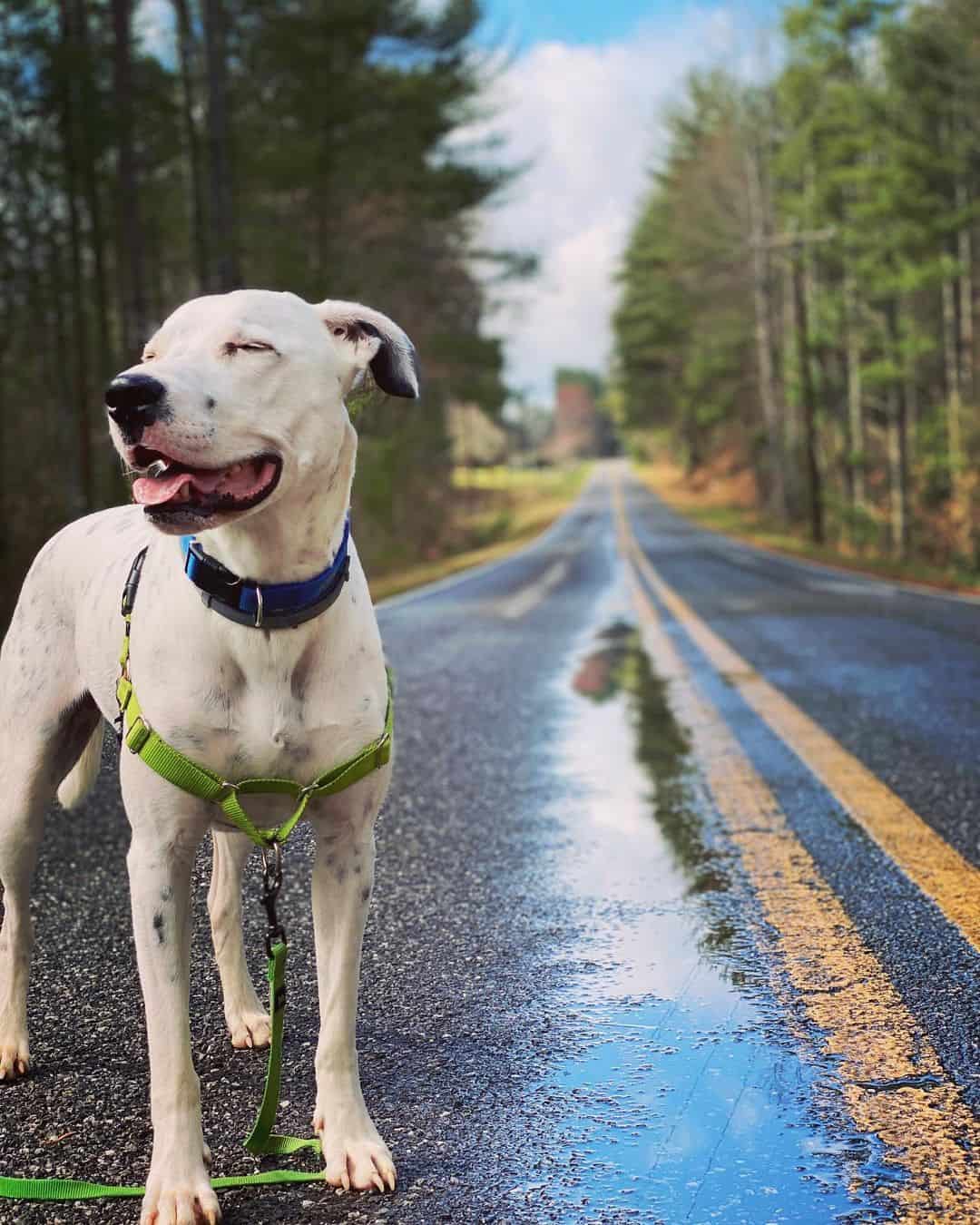
Photo from: @king_the_greatdal
To determine the life expectancy of these mixed-breed canines, we need to look at the lifespan of the Great Danes and Dalmatians.
Great Danes, like the majority of large dog breeds, have a short life expectancy. They usually live up to ten years, but it might be stretched for another year or two if they are in perfect health.
Dalmatians have a bit of a longer lifespan, as they can live up to fourteen years. This also depends on their health and the environment that they live in.
Therefore, it can be said that the Great Dalmatian mix might live up to twelve years, although their lifespan can be either longer or shorter, depending on their heritage and overall well-being.
How Much Do Great Dane Dalmatian Puppies Cost?
The price of this type of mixed breed puppy can range anywhere from $1000 to $2000, depending on the breeder, location, and the quality of the pup.
Canines that come from champion bloodlines will usually cost more, although they’re not usually crossbred with other dog breeds, so they might not be very common.
You should be careful about the purchase of hybrid dogs, as there are many puppy mills and backyard breeders that offer these types of doggies.
If you want to confirm that you found a reputable breeder, make sure to check that their puppies have gone through vaccinations, deworming, and other necessary treatments and testing before they’re put up for sale.
READ NEXT: Top 6 Harlequin Great Dane Breeders That Don’t Joke
Also, a breeder should be able to provide answers to all your questions, but they should also possess medical documentation and records that confirm the well-being of their pups.
Are Great Dane Dalmatian Pups Easy To Groom?
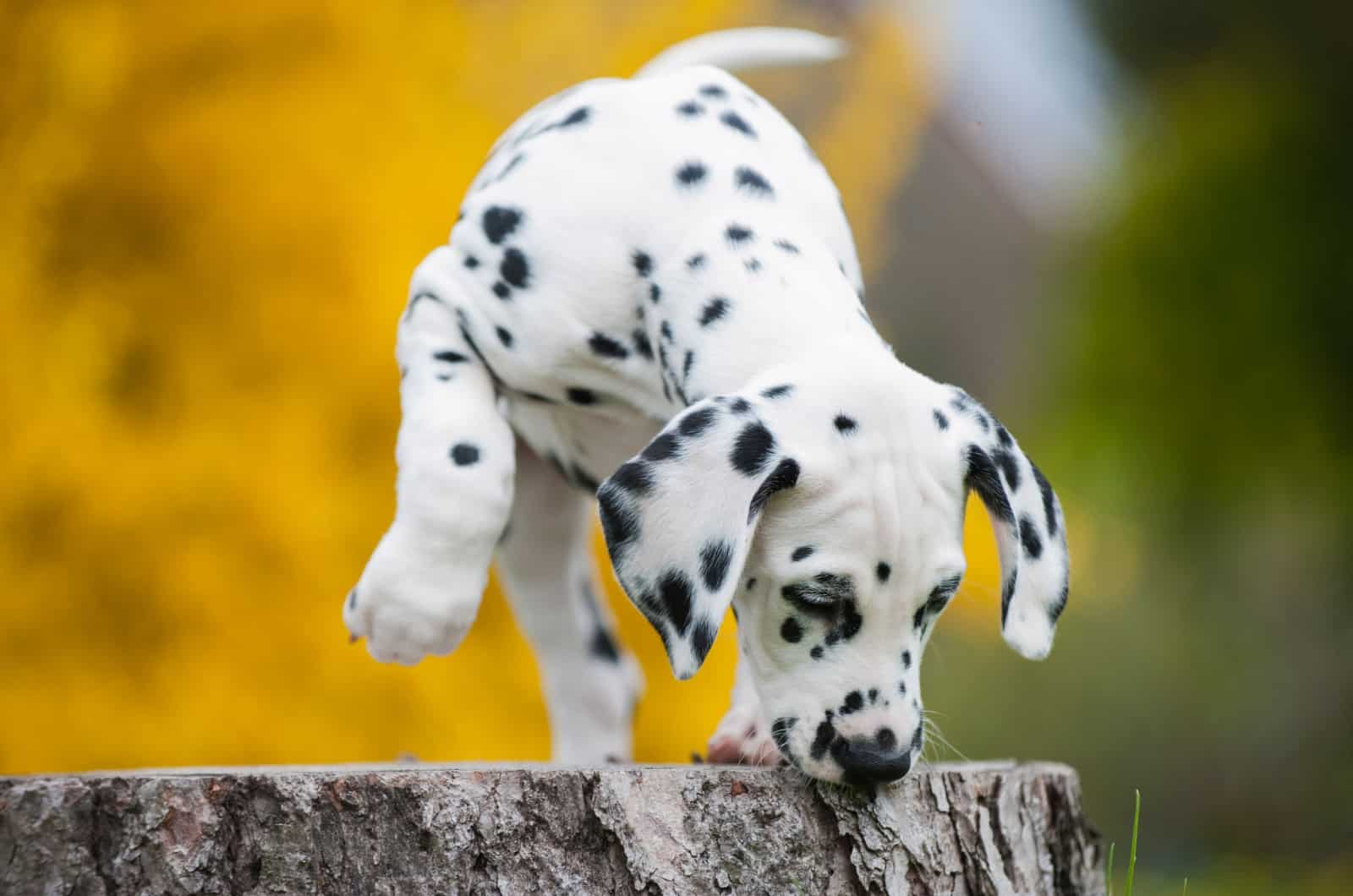
These pups are considered easy to maintain as they have short coats.
Their fur, which has a uniformly smooth and equal distribution of hair, generally requires simple care.
It is not as necessary to brush or wash dogs with short coats as often as those with longer coats.
However, that doesn’t mean that you don’t have to bathe them at least once every three or four weeks (more often if the dog gets dirty from outside activities).
In addition to the standard bathing and brushing, these puppies need to have their ears cleaned, and their teeth brushed in order to keep them healthy.
Final Thoughts
A Great Dane Dalmatian mix is one of the canines that excel in several functions; they can be working dogs, watchdogs, and loyal furry companions filled with love and affection for their dog owners.
This hybrid dog breed contains only the best traits of both purebred canines and is a great choice for dog owners that enjoy an outdoor lifestyle and related activities.
Great Dane Dalmatian mix is a very energetic breed that will require a lot of physical and mental stimulation, but it’s also a family dog that will protect all members at any cost.
On the other hand, these pups might be difficult to keep up with because of their high energy levels, especially if you’re a first-time owner. That is why they’re generally recommended for owners with previous ownership experience.
READ NEXT:
Great Dane Ear Cropping: Why (Not) Do It?
12 Best Great Dane Collars – Top Collars for Your Gentle Giant
Long-Haired Dalmatian – All The Breed Information You Need
How Much Do Dalmatians Cost? Crunching Numbers Black On White
